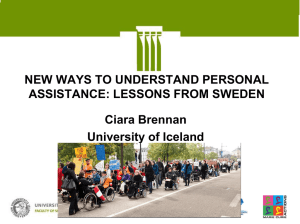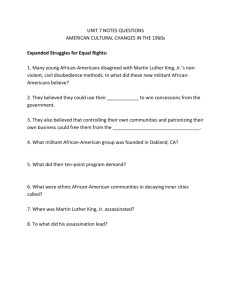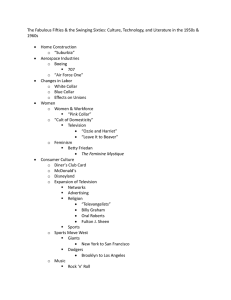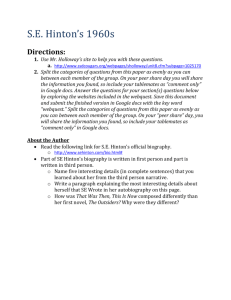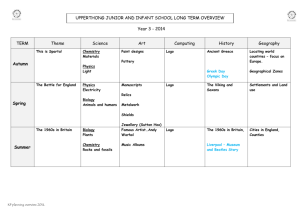The rise of the New Western in the 1960s: A
advertisement
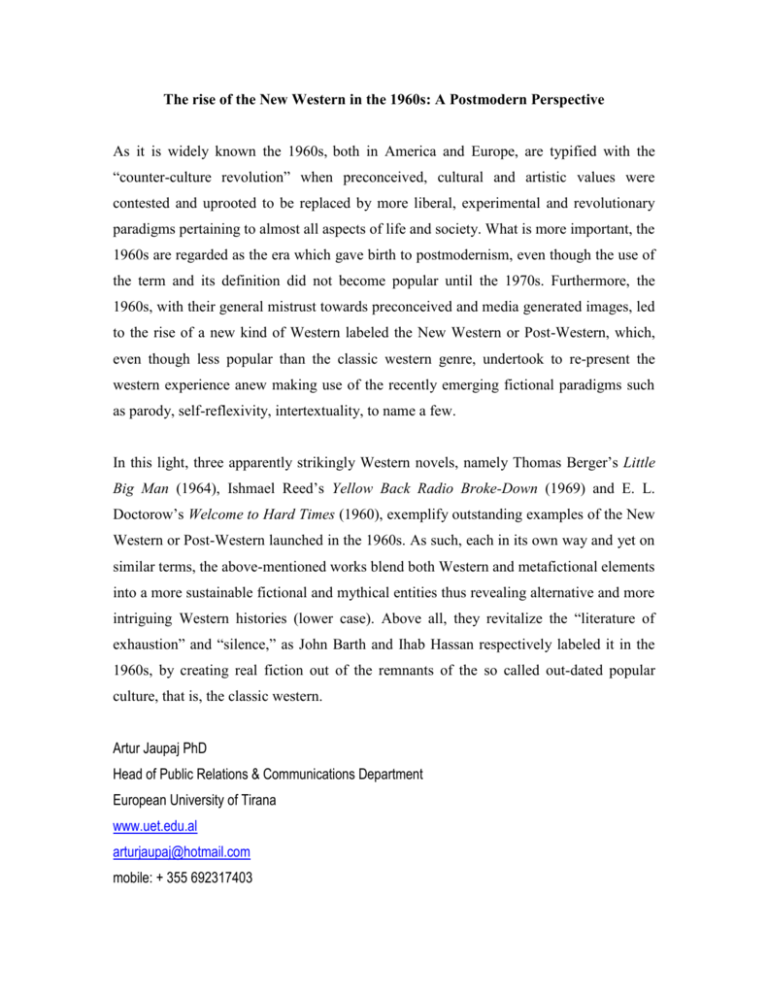
The rise of the New Western in the 1960s: A Postmodern Perspective As it is widely known the 1960s, both in America and Europe, are typified with the “counter-culture revolution” when preconceived, cultural and artistic values were contested and uprooted to be replaced by more liberal, experimental and revolutionary paradigms pertaining to almost all aspects of life and society. What is more important, the 1960s are regarded as the era which gave birth to postmodernism, even though the use of the term and its definition did not become popular until the 1970s. Furthermore, the 1960s, with their general mistrust towards preconceived and media generated images, led to the rise of a new kind of Western labeled the New Western or Post-Western, which, even though less popular than the classic western genre, undertook to re-present the western experience anew making use of the recently emerging fictional paradigms such as parody, self-reflexivity, intertextuality, to name a few. In this light, three apparently strikingly Western novels, namely Thomas Berger’s Little Big Man (1964), Ishmael Reed’s Yellow Back Radio Broke-Down (1969) and E. L. Doctorow’s Welcome to Hard Times (1960), exemplify outstanding examples of the New Western or Post-Western launched in the 1960s. As such, each in its own way and yet on similar terms, the above-mentioned works blend both Western and metafictional elements into a more sustainable fictional and mythical entities thus revealing alternative and more intriguing Western histories (lower case). Above all, they revitalize the “literature of exhaustion” and “silence,” as John Barth and Ihab Hassan respectively labeled it in the 1960s, by creating real fiction out of the remnants of the so called out-dated popular culture, that is, the classic western. Artur Jaupaj PhD Head of Public Relations & Communications Department European University of Tirana www.uet.edu.al arturjaupaj@hotmail.com mobile: + 355 692317403

